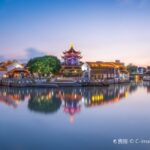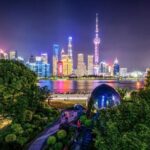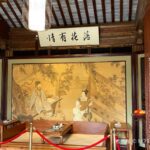Tang Yin (1470-1524), styled Bo Hu, and known as Liu Ru Jushi, was a native of Suzhou and one of the Ming Dynasty painters, also known as one of the ‘Four Masters of Wu School’. The site of Tang Yin’s former residence, also known as Baohua Temple or Wen Chang Pavilion, was listed as a cultural relic protection unit in Suzhou in 1982. In the 18th year of the Hongzhi era (1505), or the second year of the Zhengde era (1507), Tang Yin chose a location in Peach Blossom Valley to build his residence, which was named Peach Blossom Temple.
It is recorded that there were several structures including Peach Blossom Temple, Meng Mo Pavilion, Xu Pu Hall, and Jie Die Zhai. In the early years of the Shunzhi reign, the famous doctor Shen Mingsheng acquired the site and constructed Meng Mo Pavilion, Liu Ru Pavilion, Peach Blossom Temple, and Rong Jing Pavilion, which were collectively referred to as Tang’s Garden. During the Qianlong period, the monk Chanlin and Daoxin transformed it into Baohua Temple, and during the Guangxu period, it was again changed to Wen Chang Pavilion. The existing building area is 511 square meters, facing north and south, and can be roughly divided into two routes and two sections of houses. The first section of the west route is a water pavilion built by the pool, with a width of five rooms at 15.4 meters and a depth of 9 meters, featuring a hard mountain top and an internal structure resembling a boat canopy with round beam frames. The second section is a hall. To the east of the water pavilion, there is a small stone bridge from the Qing Dynasty, ‘Qinglian Bridge’, spanning the pool for access. The opening hours and business status are subject to the daily opening conditions.Tang Yin’s Former Residence Site
Tang Yin (1470-1524), styled Bo Hu, and known as Liu Ru Jushi, was a native of Suzhou and one of [&h[...]









